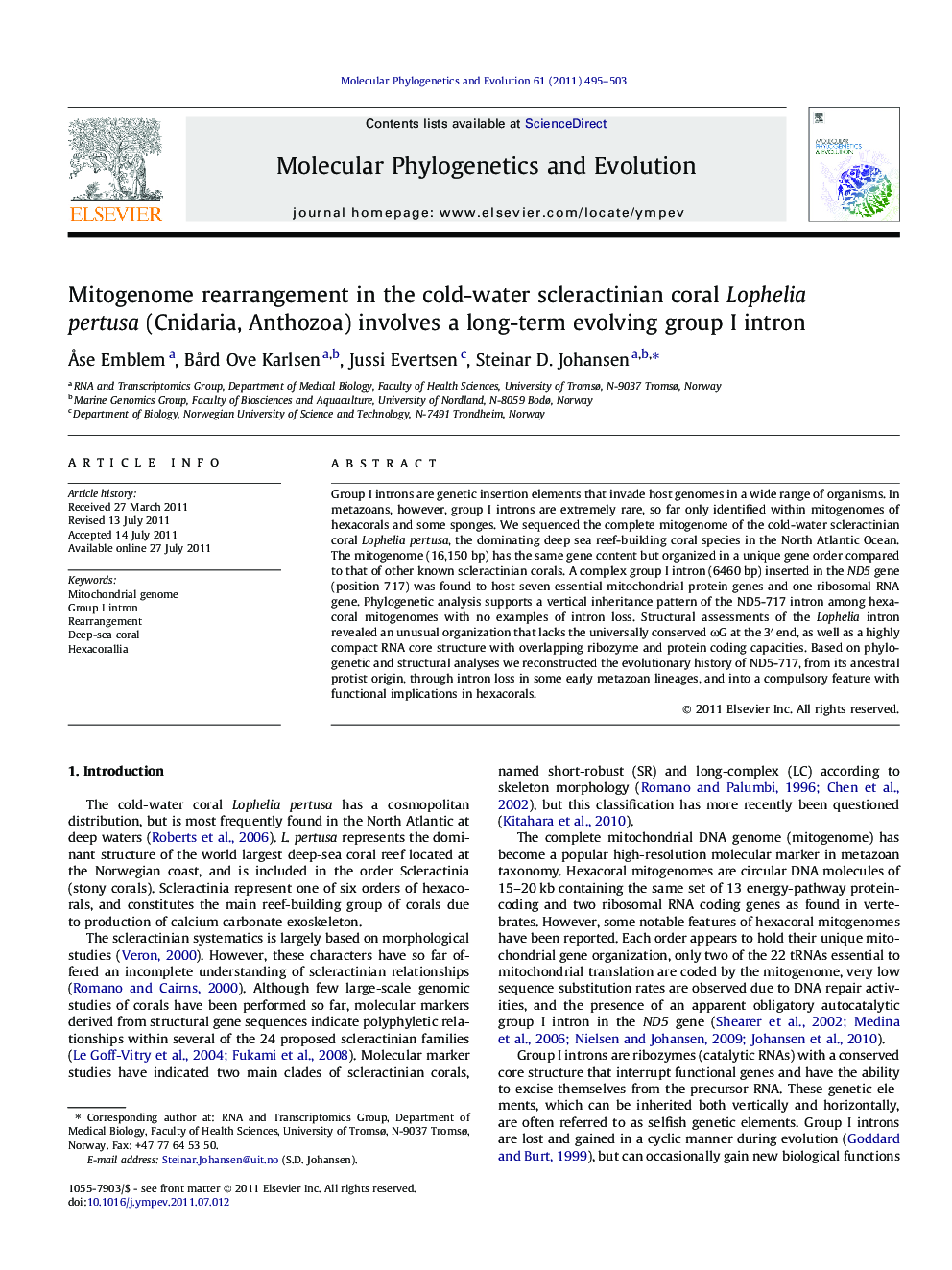| Article ID | Journal | Published Year | Pages | File Type |
|---|---|---|---|---|
| 2834031 | Molecular Phylogenetics and Evolution | 2011 | 9 Pages |
Group I introns are genetic insertion elements that invade host genomes in a wide range of organisms. In metazoans, however, group I introns are extremely rare, so far only identified within mitogenomes of hexacorals and some sponges. We sequenced the complete mitogenome of the cold-water scleractinian coral Lophelia pertusa, the dominating deep sea reef-building coral species in the North Atlantic Ocean. The mitogenome (16,150 bp) has the same gene content but organized in a unique gene order compared to that of other known scleractinian corals. A complex group I intron (6460 bp) inserted in the ND5 gene (position 717) was found to host seven essential mitochondrial protein genes and one ribosomal RNA gene. Phylogenetic analysis supports a vertical inheritance pattern of the ND5-717 intron among hexacoral mitogenomes with no examples of intron loss. Structural assessments of the Lophelia intron revealed an unusual organization that lacks the universally conserved ωG at the 3′ end, as well as a highly compact RNA core structure with overlapping ribozyme and protein coding capacities. Based on phylogenetic and structural analyses we reconstructed the evolutionary history of ND5-717, from its ancestral protist origin, through intron loss in some early metazoan lineages, and into a compulsory feature with functional implications in hexacorals.
Graphical abstractFigure optionsDownload full-size imageDownload as PowerPoint slideHighlights► Sequenced the first complete mitogenome from a cold-water scleractinian coral. ► Performed phylogenetic analysis of Lophelia based on mitogenome sequences. ► Identified a novel gene organization that involve a complex group I intron. ► Reconstructed the intron evolutionary history from structural and phylogenetic data.
